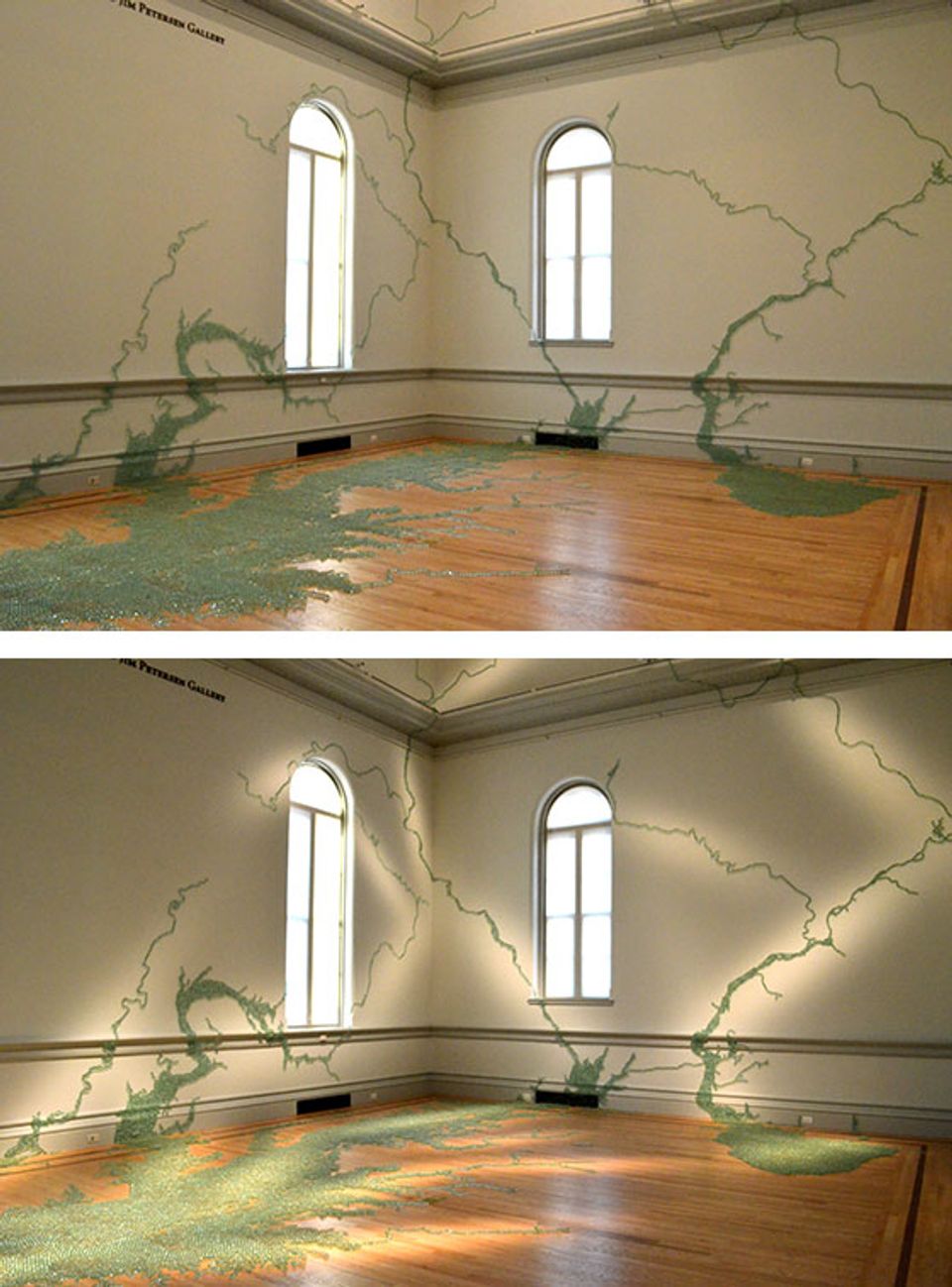

"Years ago when we started looking at LEDs they just weren't ready for use in museums," says Scott Rosenfeld, lighting director at the Smithsonian American Art Museum and the Renwick Gallery. In 2010, Rosenfeld set out to see what he could learn about LED lighting and apply it to the museum. All lighting within the galleries and public spaces in the recently renovated Renwick was converted to LED after extensive research, testing, and prototype development. In fact, Rosenfeld's work is changing the way museums within the Smithsonian and elsewhere light their galleries and works of art. Incandescent lighting is so last century; LED technology is the wave of the future.
Rosenfeld and a team of scientists from the Department of Energy (a lighting scientist), the National Institute of Standards and Technology (a vision scientist), and the Getty Conservation Institute (a conservation scientist) were able to develop LED lighting that hit all the right notes for museums, both aesthetically and technically. They set up two test galleries in the Renwick and SAAM to try out LEDS by different manufacturers.
One thing they learned is that a new kind of fixture needed to be created. The old incandescent light fixtures were sealed to prevent light leak. However, since "electronics hate heat" a fixture had to be created that eliminated high temperatures. "We went from wanting completely sealed lights to canisters with holes for ventilation. The air can pass through but not the light," says Rosenfeld.
The LEDs have brought an array of benefits to the museum. "There are such compelling reasons to use them," Rosenfeld tells me as we walk through the Renwick, "They last at least three times longer than incandescent bulbs and they use a quarter of the electricity. "If this were an all-incandescent museum, we'd use five watts per square foot. We're now down to one watt, a savings of about 80 percent of the energy. It looks beautiful and its better."
LEDs use less energy and help stabilize the climate for the museum. "A museum with all incandescent lighting takes three hours for climate controls to catch up," Rosenfeld says, "We don't have a massive heat load, so the museum has a more stable temperature and humidity environment."
The LEDs also allow Rosenfeld to call on his background in theater lighting and really pinpoint the light. What's most important for Rosenfeld is the artwork and the visitor experience. The question he always asks himself is, "What can I do with light to help create a dynamic experience that conveys the artist's ideas?" The original idea for lighting Maya Lin's WONDER installation, Folding the Chesapeake, was to floodlight it like modern art. When Lin came in and saw it she thought, "Oh no, not flat lighting." Rosenfeld and Lin spent the next five hours redoing the light. "I started tracing the rivers with light. This type of lighting would not have been possible with conventional halogen spotlights. LEDS are directional by nature, so we noodged the industry to create a 4-degree LED spotlight for us. With the addition of special plastic lenses, LEDS allow me to paint with light. I can stretch the light, and in effect, make rivers of light. The secret of lighting design, I was once told, is to put the light where you want it and take it away where you don't."
"LED is not the story, the art is the story," Rosenfeld says, then quickly adds, "Unless of course the artwork, like the Leo Villareal installation (Volume (Renwick), is composed of LED lights."

















